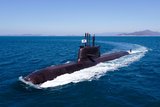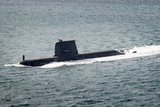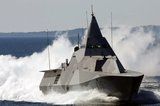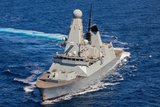Thyssenkrupp Marine to provide vital support to German U-boats
HDW Class 212A air-independent submarine is compact and features high payloads for sensors, communication equipment, weapon control systems and weapons. (Thyssenkrupp Marine Systems)
Thyssenkrupp Marine has been selected to provide replacement battery monitoring equipment for four Type 212A-class U-boats by the Federal Office of Bundeswehr Equipment, Technology and in-service Support.
The value of the contract has not been disclosed.
This was the only offer received for the contract and the contract notice was not publicised.
This is because the provision of services requires detailed knowledge of the design documents, which only Thyssenkrupp Marine has access to.
If the contract was awarded to another company, then it may endanger the lives of the crew due to a lack of technical knowledge of the design.
The contract is likely to be sub-contracted by Thyssenkrupp Marine, who would provide the technical information required.
According to Shephard Defence Insight, the Type 212A was designed with an X-rudder for better manoeuvring in shallow water. The rudder is optimised for operations in the Baltic Sea and the Mediterranean Sea.
The 212s are fitted with an MSI-91 combat system and have link 11 tactical data links, the FL 1800U suite for electronic warfare, the TAU 2000 torpedo countermeasures system and are equipped with the DM2A4 torpedo.
Related Equipment in Defence Insight
More from Naval Warfare
-
![Is South Korea finally being taken seriously for Western submarine programmes?]()
Is South Korea finally being taken seriously for Western submarine programmes?
South Korean shipbuilders are beginning to make their mark beyond Asia, competing for major North American and European submarine programmes and becoming serious contenders on a global scale.
-
![AUKUS Pillar 2 could narrow focus to “four key areas” says UK official]()
AUKUS Pillar 2 could narrow focus to “four key areas” says UK official
Few concrete ideas have emerged so far on which “advanced capabilities” will be brought forward under Pillar 2 of the AUKUS partnership, but the Pentagon’s review of the programme could bring more clarity.
-
![Sweden’s decision on four new warships inches closer as it eyes UK, France and Spain]()
Sweden’s decision on four new warships inches closer as it eyes UK, France and Spain
Sweden decided last year that it wanted a significantly larger warship for its Luleå Class programme than originally planned, with three likely contenders that could potentially deliver within the country’s tight schedule.
-
![US Coast Guard prepares procurement of next-gen surface search radar]()
US Coast Guard prepares procurement of next-gen surface search radar
The NXSSR will replace five in-service capabilities and be the US Coast Guard’s primary collision avoidance system.
-
![MBDA-led DragonFire’s latest trials move the LDEW system closer to UK Navy integration]()
MBDA-led DragonFire’s latest trials move the LDEW system closer to UK Navy integration
The DragonFire lines up with other European laser-directed energy weapons being developed in collaboration with MBDA.
























